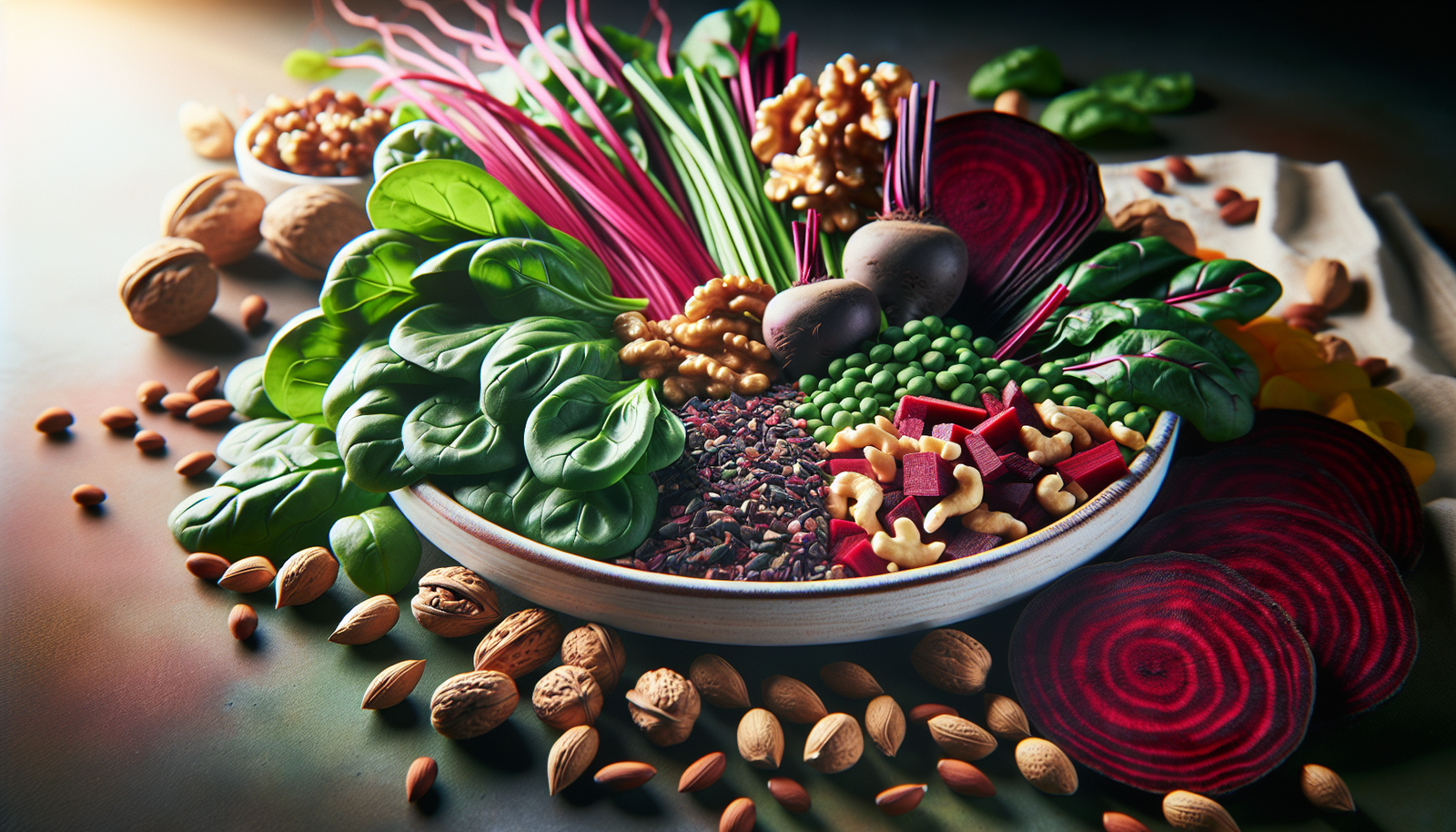Have you ever thought about how when you eat can impact how your body absorbs different nutrients? It’s a fascinating topic, especially when you consider oxalates, compounds found in various foods that can contribute to kidney stone formation or affect mineral absorption. Understanding the timing of meals in relation to oxalate-rich foods can be crucial for your overall health. Let’s delve into how this works.
What Are Oxalates?
Oxalates, or oxalic acid, are naturally occurring compounds found in many plants. They can bind with minerals like calcium, forming insoluble salts that your body can’t use. Foods high in oxalates include spinach, rhubarb, beet greens, and nuts. While they have certain health benefits, consuming them in excess, particularly without considering the timing of your meals, may lead to issues like kidney stones.
How Oxalates Affect Your Health
You might wonder why oxalates are a concern. When you consume high-oxalate foods, they can inhibit the absorption of essential minerals such as calcium, magnesium, and iron. This absorption interference can lead to nutrient deficiencies over time, especially if you primarily consume a diet high in these oxalate-rich foods.
The Science of Absorption
Understanding how absorption works is key to recognizing the role food timing plays. Nutrient absorption occurs primarily in the intestines, where your body uses various factors to determine how effectively it can uptake nutrients from food.
Factors That Influence Nutrient Absorption
-
Food Composition: The type of food you consume can play an important role. For example, meals rich in fat can slow down digestion, allowing more time for nutrient absorption.
-
Meal Timing: When you eat can also influence how much you absorb. Eating foods in the right order or at the right time relative to one another can make a significant difference.
-
Digestive Health: Your gut environment, including the balance of gut bacteria, affects absorption. A healthy gut generally enhances your ability to absorb nutrients effectively.
-
Presence of Other Compounds: Certain foods can either enhance or inhibit the absorption of minerals. For instance, vitamin C can enhance iron absorption, counteracting some negative effects of oxalates.

Timing Matters: When Should You Eat?
Have you ever heard that you should wait a while after eating certain foods before consuming others? That notion is very relevant when it comes to oxalates.
The Importance of Meal Intervals
When you eat high-oxalate foods alongside calcium-rich foods, the two can bind together, making it harder for your body to absorb calcium. Ideally, you want to space these foods out. Here are some tips:
-
Separate High-Oxalate Foods and Calcium: Try to eat oxalate-rich meals at least two hours apart from calcium sources like dairy.
-
Consider Meal Frequency: Eating smaller, more frequent meals may help your body absorb nutrients better than infrequent large meals.
The Role of Hydration
Hydration is more than merely sipping water alongside your meals. Adequate fluid intake can help dilute oxalate levels and reduce the risk of them forming crystals in the kidneys. Drinking water before, during, and after meals is a good habit to cultivate.
Foods to Watch
You might be surprised to discover how many common foods contain oxalates. Here’s a concise list based on their levels:
| Oxalate Level (mg per serving) | Food Source |
|---|---|
| Very High (over 100 mg) | Spinach, Rhubarb, and Swiss chard |
| High (50–100 mg) | Beet greens, Nuts (almonds, cashews), Carrots |
| Moderate (10–50 mg) | Sweet potatoes, Soy products, Berries |
| Low (under 10 mg) | Eggs, Meat, Fish, and most dairy products |

Meal Planning: Making It Work for You
If you’re serious about managing oxalate intake, meal planning becomes essential. You might be wondering how to craft meals that minimize oxalate absorption while ensuring you still get all the nutrients necessary for a balanced diet.
Crafting Low-Oxalate Meals
-
Choose Low-Oxalate Staples: Use grains that are low in oxalates, such as white rice or quinoa. Pairing these with your favorite lean protein can form the basis of a nutritious meal.
-
Incorporate Calcium-Rich Foods: Focus on dairy or fortified plant-based alternatives to counterbalance the effects of oxalates. Think yogurt with low-oxalate fruit for breakfast!
-
Consider Cooking Methods: Boiling can reduce oxalate content in some foods. For example, boiled spinach has lower oxalate levels than raw spinach.
Example Meal Ideas
To make this easier, here are some example meals that keep oxalate levels in check:
| Meal Type | Food Examples |
|---|---|
| Breakfast | Scrambled eggs with cheese, oatmeal made with water or almond milk, topped with berries |
| Lunch | Grilled chicken salad with mixed greens and cucumbers, low-oxalate dressing |
| Dinner | Baked fish with white rice and steamed broccoli (low in oxalates) |
| Snacks | Greek yogurt with honey and low-oxalate fruit, such as bananas |
Timing Your Meals
Getting the timing right can feel tricky, but it’s worth the effort. The goal shouldn’t just be to limit high-oxalate foods but also to understand when to consume them.
How to Space Your Meals
- Plan Breakfast: Start your day with a low-oxalate meal.
- Post-Breakfast Snack: Wait at least two hours after breakfast before consuming any foods high in oxalates.
- Lunch: Focus on balance, ensuring you include calcium-rich foods.
- Afternoon Snack: Avoid high-oxalate ingredients for snacks if you have a high-oxalate dinner planned.
Final Meal Example
How about constructing your day like this?
- Breakfast: Omelet with cheese and a side of banana.
- Post-Breakfast Snack: A handful of almonds (choose a low portion).
- Lunch: Quinoa salad with grilled chicken, cucumbers, and yogurt dressing.
- Afternoon Snack: Low-oxalate fruit like apple slices.
- Dinner: Grilled salmon, boiled potatoes, and steamed carrots.

Beyond Timing: Lifestyle Considerations
Eating habits aren’t the only factors at play. Lifestyle choices can affect how your body handles oxalates.
Exercise Matters
Regular physical activity can promote better overall digestion and help with kidney function. When your body is functioning optimally, nutrient absorption, including handling of oxalates, tends to improve.
Stress Management
Believe it or not, stress can interfere with digestion. Finding ways to reduce stress, such as yoga or meditation, can improve your gut health and, in turn, possibly affect how your body deals with oxalate absorption.
Gut Health
Remaining aware of your gut health is crucial. A balanced microbiome can aid in breaking down oxalates more effectively. Consider probiotics or fermented foods; they may help enhance gut flora diversity.
Conclusion: Be Mindful of Your Choices
Your choices regarding food, timing, and lifestyle can significantly affect how your body absorbs nutrients, particularly regarding oxalates. While it might feel overwhelming at first, taking proactive steps can lead to better nutrient absorption and overall health.
By incorporating low-oxalate meals, being mindful of timing, fostering good digestive health, and managing stress, you’ll find that you can enjoy a balanced diet without compromising your well-being. Remember, it’s all about finding a rhythm that works for you, allowing you to maintain both pleasure in eating and health in your lifestyle.


